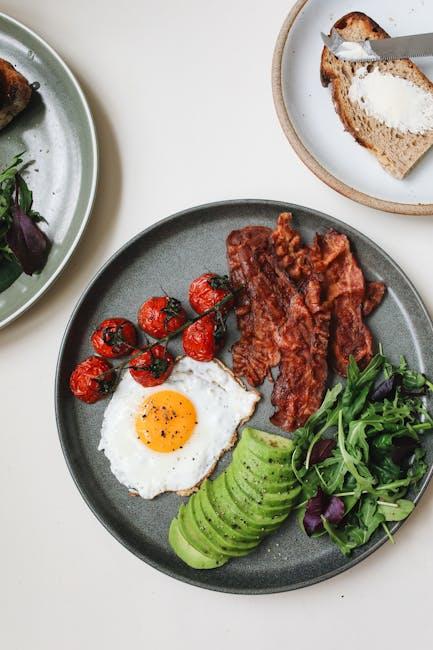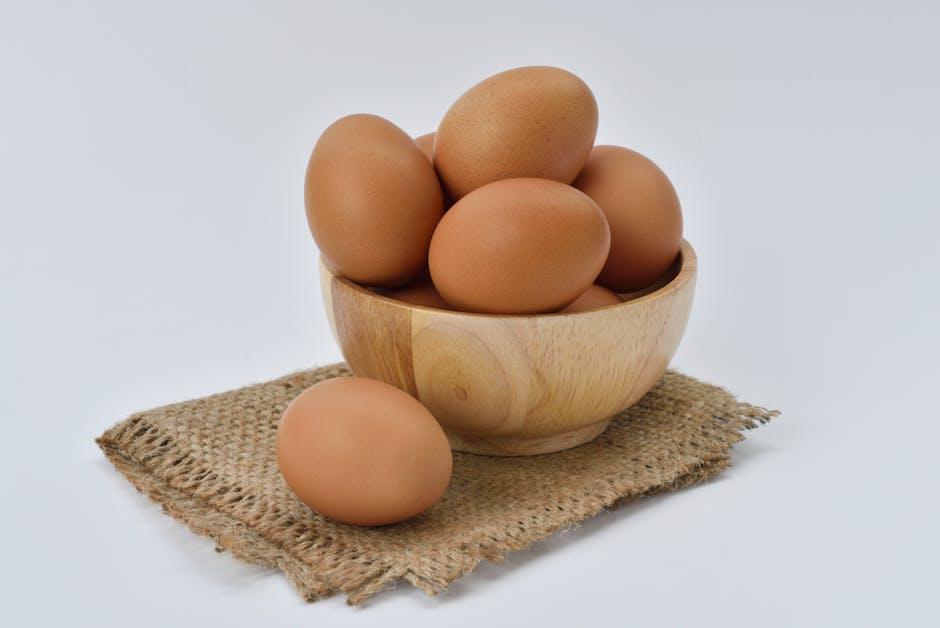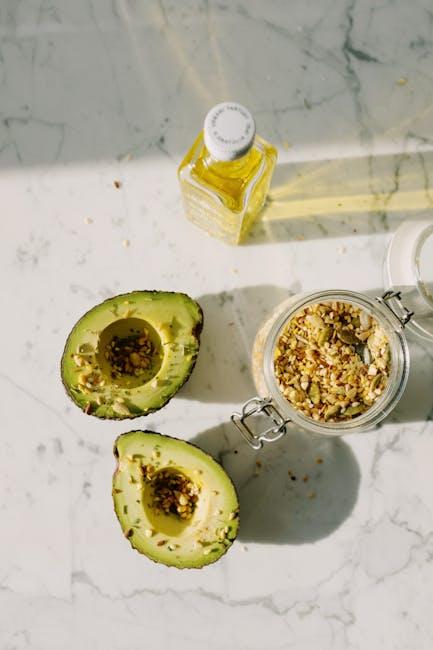Embarking on the GAPS diet journey means reimagining your pantry as a sanctuary of nourishment and healing. Rooted in principles that emphasize gut health and whole, nutrient-dense foods, the GAPS diet invites thoughtful choices at the grocery store—where every item you select plays a vital role in supporting digestion and overall wellness. Whether you’re new to GAPS or refining your shopping routine, understanding the essential ingredients that fuel this protocol is key. Let’s explore the grocery essentials that transform your kitchen into a hub of restorative meals and vibrant health.
Table of Contents
- GAPS Diet Foundations Foods that Nourish and Support Gut Healing
- Fresh and Fermented Vegetables for Optimal Digestion
- Protein Sources that Align with GAPS Guidelines
- Essential Fats and Oils to Enhance Healing Energy
- Herbs Spices and Natural Sweeteners to Elevate Meals
- Q&A
- In Retrospect

GAPS Diet Foundations Foods that Nourish and Support Gut Healing
The cornerstone of healing starts with truly nourishing your body using whole, unprocessed foods specially chosen to support intestinal repair. Emphasizing bone broths rich in collagen and gelatin, these natural elixirs gently restore the gut lining and provide essential minerals. Organic vegetables, particularly fermented varieties like sauerkraut and kimchi, not only supply vital probiotics but also contribute enzymes and antioxidants that help reduce inflammation and repopulate beneficial bacteria.
Key foundational foods include:
- Homemade bone broths and slow-cooked meats
- Fermented vegetables and dairy (if tolerated)
- Organic eggs and cold-pressed oils like olive and coconut
- Steamed and sautéed low-starch vegetables
| Food Group | Gut Healing Benefit | Example |
|---|---|---|
| Bone Broth | Strengthens intestinal walls | Chicken or beef broth |
| Fermented Vegetables | Replenishes gut flora | Sauerkraut, kimchi |
| Healthy Fats | Reduces inflammation | Coconut oil, olive oil |
| Protein | Supports tissue repair | Eggs, organ meats |

Fresh and Fermented Vegetables for Optimal Digestion
Fresh and fermented vegetables are indispensable allies in nurturing your digestive health on the GAPS diet. Fresh veggies packed with fiber help bulk up stools and stimulate gentle, natural cleansing of the gut lining. Meanwhile, the magic of fermentation unlocks beneficial probiotics that replenish your gut flora, aiding digestion and strengthening immune function. Including a variety of crisp cucumbers, crunchy carrots, and leafy greens ensures a spectrum of vitamins and minerals, while naturally fermented favorites like sauerkraut, kimchi, and homemade pickles provide a tangy, probiotic-rich boost.
To optimize absorption and maximize digestive benefits, aim for a colorful plate that combines both textures and flavors. Here are some essentials to keep stocked:
- Fresh options: Spinach, zucchini, radishes, bell peppers
- Fermented staples: Sauerkraut, kimchi, beet kvass, lacto-fermented cucumbers
- Probiotic benefits: Richly fermented veggies replenish gut bacteria and ease digestion
| Vegetable | Fresh Benefits | Fermented Benefits |
|---|---|---|
| Carrots | High in fiber and antioxidants | Promotes gut flora diversity |
| Cabbage | Rich in vitamins C and K | Natural source of probiotics |
| Beets | Supports liver detoxification | Enhances nutrient absorption |

Protein Sources that Align with GAPS Guidelines
Choosing the right proteins is crucial when following the GAPS diet, as they form the foundation for healing and nourishment. Prioritize organic, grass-fed, and pasture-raised options whenever possible to ensure your meals are packed with quality nutrients and free from harmful additives. Rich sources like free-range eggs, wild-caught fish, and slow-cooked bone broth provide essential amino acids alongside beneficial gut-healing compounds. These protein sources support digestion and gut lining restoration, which is at the heart of the GAPS philosophy.
In addition to traditional animal proteins, incorporating a variety of fats essential for energy and cellular repair enhances the diet’s effectiveness. Here’s a quick reference for ideal GAPS-approved proteins to keep stocked:
| Protein Source | Key Benefits | Preparation Tips |
|---|---|---|
| Grass-Fed Beef | Rich in omega-3, zinc | Simmmer slowly for tenderness |
| Pasture-Raised Chicken | High quality protein, less inflammation | Use the whole bird; make broth from bones |
| Wild-Caught Fish | Loaded with essential fats | Eat fresh or lightly steam |
| Free-Range Eggs | Complete protein & choline | Boil or prepare gently to preserve nutrients |
| Homemade Bone Broth | Collagen & gut-healing minerals | Simmer bones 12-24 hours |

Essential Fats and Oils to Enhance Healing Energy
Incorporating the right fats and oils into your diet is vital for supporting the body’s natural healing processes, particularly on the GAPS diet. These nutritional powerhouses provide essential fatty acids and fat-soluble vitamins that play a crucial role in reducing inflammation, repairing cellular membranes, and enhancing brain function. Prioritize sources that are minimally processed to retain their healing properties and avoid those that can trigger oxidative stress or irritation.
- Coconut oil: Rich in medium-chain triglycerides (MCTs), it boosts metabolism and offers antimicrobial benefits.
- Extra virgin olive oil: Packed with antioxidants and anti-inflammatory compounds, perfect for cold dishes and dressings.
- Grass-fed butter or ghee: Provides fat-soluble vitamins like A, D, E, and K2, essential for gut and immune health.
- Flaxseed oil: A plant-based omega-3 source that helps balance inflammation when consumed cold.
| Fat Source | Key Benefits | Best Use |
|---|---|---|
| Coconut Oil | Antimicrobial, MCTs for energy | Cooking at moderate heat |
| Extra Virgin Olive Oil | Rich in antioxidants, anti-inflammatory | Salad dressings, drizzling |
| Grass-Fed Butter/Ghee | Vitamins A, D, K2; gut repair | Low heat cooking, baking |
| Flaxseed Oil | Omega-3 fatty acids, inflammation support | Cold dishes only |

Herbs Spices and Natural Sweeteners to Elevate Meals
Incorporating a vibrant array of herbs, spices, and natural sweeteners is essential to transforming simple GAPS diet meals into flavorful culinary experiences. Fresh herbs like basil, cilantro, and parsley not only brighten the palate but also offer valuable antioxidants and digestive benefits. Ground spices such as turmeric,
When it comes to natural sweeteners, options like raw honey, maple syrup, and coconut sugar are ideal for adding subtle sweetness that aligns with GAPS protocols. Each comes with its own unique flavor profile and health benefits, from antimicrobial properties in honey to minerals in maple syrup. To help you choose the perfect match for your recipes, here’s a quick reference table:
| Natural Sweetener | Flavor Profile | Key Benefits |
|---|---|---|
| Raw Honey | Floral, rich | Antimicrobial, soothing |
| Maple Syrup | Earthy, caramel | Minerals, antioxidants |
| Coconut Sugar | Buttery, mild caramel | Low glycemic index, minerals |
- Fresh herbs: add brightness and freshness
- Ground spices: contribute depth and health benefits
- Natural sweeteners: provide gentle sweetness with nutritional perks
Q&A
Q&A: GAPS Diet Grocery Essentials
Q1: What is the GAPS diet, and why do grocery essentials matter?
A1: The GAPS diet—Gut and Psychology Syndrome—is designed to heal the gut lining and improve overall mental and physical health by eliminating hard-to-digest foods and focusing on nutrient-dense, easy-to-digest options. Grocery essentials are crucial because they form the foundation of your meals, enabling you to stick to the diet’s principles without stress or guesswork.
Q2: Which protein sources are considered staples on the GAPS diet?
A2: GAPS emphasizes easily digestible, high-quality proteins. Common staples include homemade bone broth, organic free-range eggs, wild-caught fish, and grass-fed meats. These options help nourish the gut lining while providing vital amino acids.
Q3: What vegetables are typically stocked for GAPS?
A3: Non-starchy, gut-friendly vegetables like carrots, zucchini, spinach, and onions are key. Fermented veggies, such as homemade sauerkraut, also make regular appearances for their probiotic benefits. Avoiding starchy or high-fiber raw veggies initially is important to reduce gut irritation.
Q4: Are there special fats or oils recommended on the GAPS diet?
A4: Yes, healthy fats are essential. GAPS grocery lists usually feature coconut oil, olive oil, clarified butter (ghee), and animal fats like tallow or schmaltz. These fats support brain function and healing without taxing digestion.
Q5: How about dairy products—are they allowed on GAPS?
A5: Dairy is introduced gradually and selectively. Fermented, full-fat dairy like homemade yogurt, kefir, and sour cream are included once tolerance builds, as they contain beneficial probiotics. Fresh cream and butter are usually considered safe from the start.
Q6: What pantry items are indispensable when shopping for the GAPS diet?
A6: Key pantry staples include natural sea salt, herbal teas, gelatin powder (to make jellies), and homemade fermented foods. Avoid processed grains, sugars, and artificial additives, as they undermine gut healing.
Q7: Any tips for maintaining GAPS grocery essentials on a budget?
A7: Planning meals around seasonal produce, buying bulk bones for broth, and making your own fermented foods can save money. Prioritizing quality over quantity and sourcing local ingredients when possible also supports both your budget and health.
Q8: Can you find GAPS-approved foods in regular grocery stores?
A8: Many GAPS essentials—like fresh vegetables, eggs, and meat—are readily available at standard stores. However, specialty items like high-quality probiotics, fermented products, and certain fats might be easier to source from health food stores or online.
Q9: How do GAPS grocery essentials change during the diet phases?
A9: Early phases focus on soothing broths, stews, and simple proteins with minimal raw vegetables. As gut health improves, the list expands to include more fresh produce, fermented foods, and dairy, adjusting to increasing digestive strength.
Q10: Any final advice for those stocking their GAPS kitchen?
A10: Embrace simplicity and quality. The real power of the GAPS diet lies in whole, nutrient-dense foods prepared mindfully. Keeping your grocery essentials versatile yet thoroughly nourishing will set you up for lasting gut health success.
In Retrospect
As you embark on the GAPS diet journey, your grocery list becomes more than just a shopping plan—it transforms into a toolkit for healing and nourishment. Stocking up on these essentials lays the foundation for restoring balance within your body, one mindful bite at a time. Remember, the true power of the GAPS diet lies not just in what you buy, but in how you choose to nurture yourself with each thoughtfully prepared meal. So, gather your staples, embrace the process, and step confidently toward a healthier, more vibrant you.














Leave feedback about this